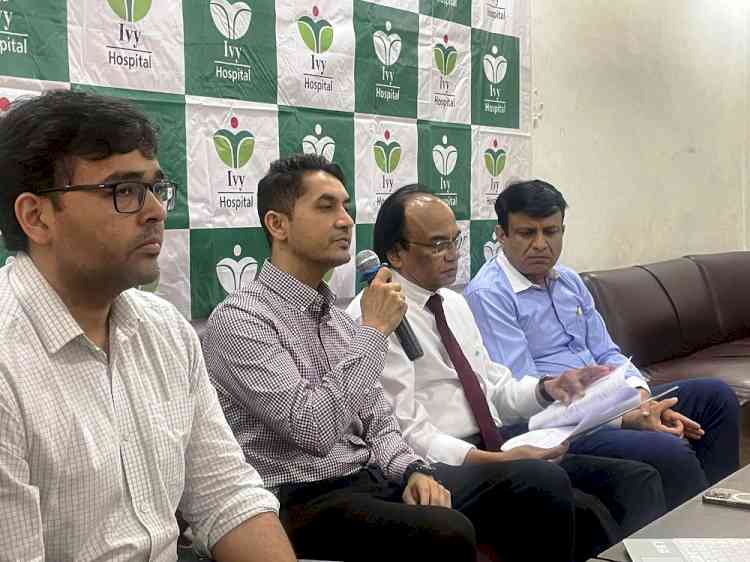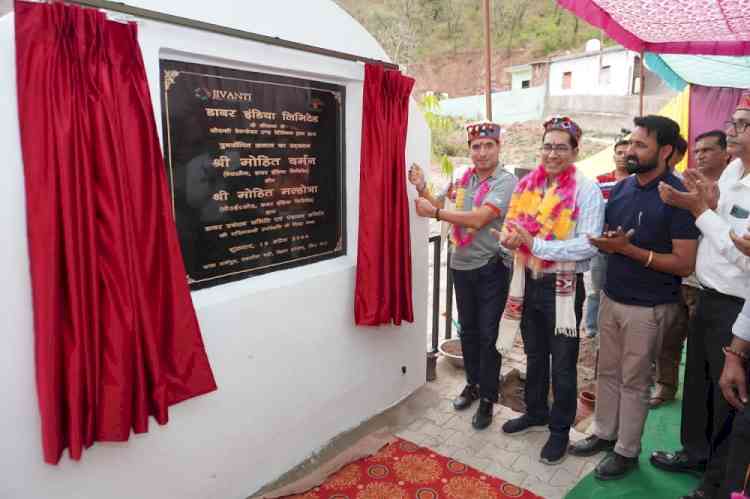48th PU Colloquium Lecture held
Author(s): City Air NewsChandigarh, April 26, 2018: The Panjab University Colloquium Committee successfully organized 48th PU Colloquium Lecture on Thursday at Dr.S.S Bhatnagar UICET, Auditorium of Panjab University, Chandigarh. Prof Arun...


Chandigarh, April 26, 2018: The Panjab University Colloquium Committee successfully organized 48th PU Colloquium Lecture on Thursday at Dr.S.S Bhatnagar UICET, Auditorium of Panjab University, Chandigarh.
Prof Arun K Grover, Vice Chancellor, Panjab University presided over the Session and in his address he enlightened the audience about PU Colloquia, and the activities and laurels of Panjab University, Chandigarh. Prof.Promila Pathak, Coordinator PU Colloquium Series briefly introduced the eminent speaker, Dr. Bhagwan Josh, Professor of Contemporary History at the Centre for Historical Studies, Jawaharlal Nehru University, New Delhi who delivered lecture on the topic “Nehru, Ashoka and the Making of Nation-State in Post-Colonial India”. He obtained his M.Sc (Hons.) in Chemistry and M.A. in History from Panjab University during the period 1968-1973, before he received his Ph.D. from Jawaharlal Nehru University. Prof. Josh and Prof. Shashi Joshi have jointly authored a three-volume history, entitled “Struggle for Hegemony in India, 1920-47”, published by Sage in 1992. They are also the authors of “A History of Indian Communists” (3 Vols.) published by “Sage” in 2011. He was one of the project committee members of “Europe-South Asia Maritime Heritage Project: Teaching Methodologies, Distance Learning and Multimedia Course Materials Development.” He has also been the Co-director (1983-87) of an ICSSR project on the “History of the Indian National Congress, 1885-1947.” Besides being a Common-Wealth Fellow at SOAS, London during 1996-97, he has also been a Visiting Scholar at Maison des Sciences de l’homme, Paris and Oxford University.
In his talk, Dr. Bhagwan Josh talked about The task of framing free India’s Constitution, which was completed in three years from December 9, 1946 to November 26, 1949. One of the most important item before the Constituent Assembly was the decision regarding the design of flag which free India should be selecting for newly emerged independent nation. Should the Charkha dominated Congress flag be now adopted as a National Flag keeping in view the significance of the nature of Gandhi – led known violent mass movement or should it be replaced by some other symbol. This generated lot of discussion among the political circles of the country.
Inventing independent India’s new flag was of utmost importance to emphasize the point that a new historic beginning was being made in the life of modern Indian states. During this time the emblem of Ashoka, Dharamchakra and Sarnath Lion Capital came to dominate the public as well as the private space. But why did the rulers of the newly emerged Indian Nation –state appropriate the two images of Asoka’s visionary legacy? The lecture exploded at length the desires and the aspirations of the new republic and their link with the evolution of historical discourse centering on Ashoka. The speaker argued that the choice of the Dharamchakra emblem to a great extent, was rooted in Nehru’s extensive knowledge of World history and how after the destruction caused by the first World War the European intellectuals had begun to project Ashoka as world’s most significant ruler who had shunned war and began to spread his message of peace worldwide.
On this occasion, many distinguished scientists and guests, CRIKC Members, a large number of senior and young faculty members, research scholars and UG/PG students from Panjab University, Local Colleges, and neighboring institutes attended the lecture. The event ended successfully by a vote of thanks proposed by Dr. Shruti Bedi, a member Colloquium Committee.

 cityairnews
cityairnews 














